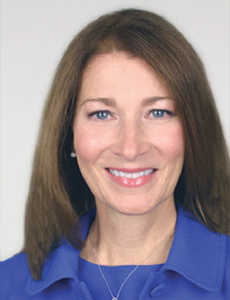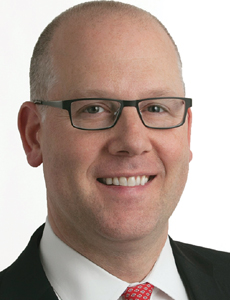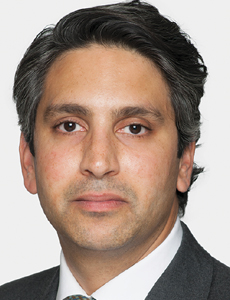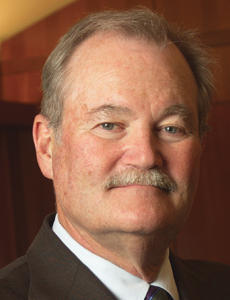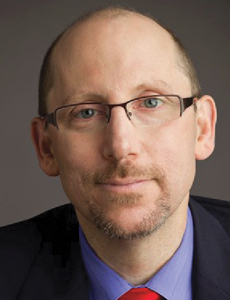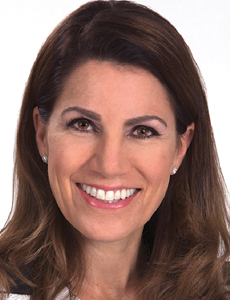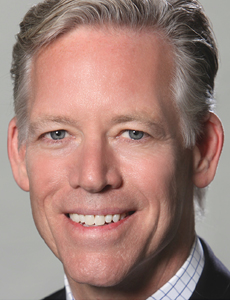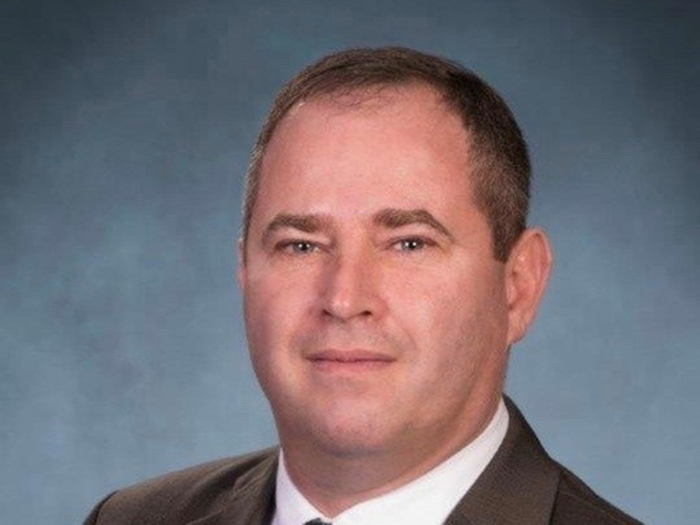Insurance Executives to Watch
2018: Year of the Underwriter

In insurance, perfect storms come in all shapes and sizes. Consider this one, as we all must.
Years and years of ample capacity and manageable losses resulted in commercial insurance pricing floating further and further downward. Everywhere you looked, but especially in property, underwriters were not able to hold the line on price.
And then it came. The third quarter of 2017. Unprecedented Caribbean storm activity aligned with a whopper of an earthquake in Mexico and wildfires that scorched hundreds of acres in California’s pricey wine country.
By some estimates as much as $100 billion in insurance industry surplus was wiped from the books in a matter of weeks, at a time when carriers were charging the lowest premium prices relative to the risk in many years. Big carriers like Chubb and AIG saw 3Q losses of more than $1 billion.
As he takes the reins at AIG, no less a figure than Brian Duperreault has christened 2018 the year of the underwriter. Across the industry, entire lines of business are being rewritten in this transitioning market.
“The severity of the recent catastrophic events forced AIG and all market participants to reassess appropriate pricing for the risks assumed,” Duperreault said.
Data and analytics receive lots of attention and resource investment, but as Duperreault and other 2018 Insurance Executives to Watch stated recently, data and analytics are just tools to be wielded in the hands of experienced underwriters, for which there is no replacement.
“No one has commented more on the importance of data analytics and technology in our industry than me,” Duperreault said during a third quarter earnings conference call with analysts.
“However, it is the underwriter, properly armed with this information, that is the central control point of our business. So, it is important that we get the balance back. Our use of technology and data will complement seasoned underwriters with the skill sets to evaluate the business on a risk by risk basis,” Duperreault said.
Duperreault also signalled that he planned to re-examine his company’s approach to the use of reinsurance.
“You know it is not my style to take large limits and retentions of risk,” he said. “We will also partner closely with reinsurance as they provide another valuable set of eyes into our book.”
_______________________________________________________
A Worthy Competitor
As a competitive figure skater, AXA Insurance Company (U.S.) CEO Dawn Miller glides across the ice with grace and artistry, making it look easy.
In truth, her skill demonstrates a powerful athleticism stemming from years of honing her craft — sometimes falling, but always getting up, smarter for the lessons learned.
This grit-and-poise combo served Miller well during her career, which started at OPIC, followed by Willis, then onto AXA P&C as global head of business development, and next leadership roles at AIG. She served with AIG as head of client engagement across 47 EMEA countries, as well as shouldering market-facing roles in Europe, the Gulf Region, Africa and the U.S.
“I apply lessons learned on the ice in business,” Miller said.
“Fail fast, I say. You will have setbacks but learn from them and move forward. Focus on what you do well and refine it.”
The next step for this worthy competitor? Leading AXA’s U.S. commercial insurance business as it develops client and stakeholder partnerships, raises the profile of multinational insurance programs and helps global clients face risks in new or unknown territories.
“This opportunity suits AXA Group given the size and breadth of our global network and the leading position of the U.S. market as a [foreign direct investment] destination,” Miller said.
Important also, Miller said, is AXA’s shift to a partnership focus.
“AXA’s global ecosystems allows us to craft solutions that empower clients. One example is AXA’s ‘Give Data Back’ data-sharing initiative that uses data as a tool to help clients know and understand risk.”
For 2018, Miller predicts, “The U.S. commercial market will begin to harden with a double-digit increase mainly due to an increase in the retrocession market, which will likely drive companies to seek alternative and enhanced modeling approaches.”
_______________________________________________________
Staying Ahead of Risk

Jeff Grange, President, North American Specialty Insurance; Global Credit and Surety Practice Leader, QBE
Since joining QBE in 2013 as president of specialty insurance, Jeff Grange tripled the division’s business in an effort to establish a national brand. Now the insurer is hoping Grange can bring his magic to its Global Credit and Surety Practice.
“We have to deliver products and services in a global context, but we also have to keep an eye on the future. We need to be ready to address risks as they emerge,” Grange said.
That effort may be hindered, though, by an aging and dwindling insurance workforce, the rapid pace of technological change, and the industry’s tendency to react rather than anticipate those changes.
Grange plans to tackle all three challenges.
“We combat those trends by partnering with STEM (science, technology, engineering and mathematics) organizations. With the rise of data analytics and the Internet of Things, the underwriter of the future will look a lot like today’s STEM student,” Grange said.
“We’re surrounding ourselves with these young individuals who will help us stay on the leading edge of innovation and bring a fresh perspective to our traditional view of risk.”
Grange will also leverage QBE’s competencies in economic forecasting.
“We’re looking prospectively at sector risk, credit markets, country risk and the like,” he said.
Staying ahead of change will be critical. In 2018 and beyond, Grange sees CAT events, political uncertainty and country risk introducing some volatility in capacity and pricing.
The credit and surety markets, however, are currently on an upward trend, buoyed by continuing economic recovery in the U.S. and a stock market at its peak.
_______________________________________________________
Leading Through Engagement
Zurich Insurance Group announced in September the retirement of Mike Foley, who served Zurich North America as CEO since 2008. Kathleen Savio, current president of alternative markets, assumes the role this January.
While Foley is leaving some pretty big shoes to fill, Savio’s reputation precedes her: Zurich credits Savio for her dynamic community engagement.
“Helping is what we do, and community engagement and involvement is an extension of our purpose,” she said. “We cannot underestimate the impact we have in how our employees feel about coming to work each day. Everyone wants to be appreciated. Even on the busiest of days, I try not to forget that.”
And her community-centric attitude extends beyond the office walls. Savio serves as chair of the Z Zurich Foundation, a $100 million-endowed foundation that provides local grants supporting youth, mental health and community resilience.
“I’ve learned a lot about the positive impact we have on businesses and communities,” she said. “Insurance helps people and businesses get back up and running when faced with adversity.”
One example of such adversity would be the hurricanes that rocked the U.S. this summer and fall.
“The immense damage from Harvey, Irma and Maria demonstrated the importance of insurance in helping communities recover.”
Savio predicts losses from the storms could reach $100 billion, which is in alignment with industry estimates, driving property price movement upward in the coming months.
“Our focus is to help people and businesses be more resilient,” she added. In her new role, Savio will be dedicated to working with Zurich’s customers and distributors to prepare for similar events and other exposures.
“Our world is changing at a faster rate than we ever have seen before, and it won’t bypass the insurance industry or any of the industries and businesses that we protect,” said Savio.
“Together with my colleagues, I’m ready to lead Zurich North America through these challenges and opportunities.”
_______________________________________________________
Fighting Stance
Following an acquisition and a significant reorganization, Allied World Insurance has entered an exciting new phase, one that will no doubt be marked by the same robust growth that has marked its history for the past 16 years.
As the insurer’s new head of European business, Ed Moresco comes across as confident about the company’s position in the face of global change and is more than ready to roll up his sleeves.
“If you look at Allied World as an organization, the term we like to use is that we punch above our weight class,” said Moresco. “We are quite often pitted against carriers that are maybe twice the size, three times our size just in terms of premium and market cap.”
The international operation, however, has not yet reached that level, which is where Moresco will focus his attention for the upcoming year and beyond.
“We’re gaining relevance in the market, but we’re certainly not to the point where we’re critical to the space,” he said. “So our focus over the next two to three years is really to get to that point where we are viewed as a critical market.”
To get there amid an environment of global volatility, he said, his operations will remain focused on the organization’s strength in technical underwriting.
“We’ve lived that mantra and that ethos throughout our growth as an organization,” he said. “Staying close to the brokers and the clients and staying true to our technical underwriting will be critical, especially in these uncertain times.”
_______________________________________________________
At Warp Speed
When Everest Re president and CEO Dominic Addesso addressed shareholders at the end of 2016, he took pride in pointing out recent hire Jonathan Zaffino, a Marsh & McLennan and ACE alumnus.
As president of Everest Insurance North America, Zaffino justified the hire by running all out in 2016, standing up nine business segments and bringing more than 100 products to market.
And his work isn’t done; Everest continues its expansion, fueling this by hiring more than 300 new colleagues in the last few years, as it transitions from a company focused on programs to a broader, global specialty company.
Zaffino, with the new title of executive vice president, Everest Re Group, is the one leading the transition in Everest Re’s insurance operations.
“We, as an organization, decided to be much more present, visible and capable in the broader definition of a specialty insurer. That included significantly expanding our capabilities in the direct broker business — both retail and wholesale,” Zaffino said.
One of Zaffino’s challenging tasks is bringing together new hires from more than 70 companies and getting them to sing from the same songbook. The lyrics involve embracing the Everest underwriting culture, which — among other things — means finding the right price for the risk regardless of line, client or geography.
Historically, Everest Re has had the right underwriting formula, averaging more than $1 billion in net income from 2012 through 2016. Its combined ratio over that same period averaged an enviable 87.
But then came the third quarter of 2017 with CAT losses squeezing more than $100 billion in surplus out of the insurance markets. Zaffino, like others, knows he’s in a transitioning market, but Everest Re possesses a robust and highly rated balance sheet.
Over the past 20-plus years, the company demonstrated its firm grip on the long view. Zaffino’s task is to build on top of that formidable foundation, moving quickly to reposition the face of the insurance operation.
“We’re moving quickly because we see opportunity,” he said.
And where does he see the markets going in 2018?
“Prior to the third quarter CAT activity, we were seeing a lot of fatigue in certain lines of business,” he said.
“The property lines began to renew at flat pricing, commercial auto lines were receiving needed rate adjustments, and pockets of other lines also started to come under increased scrutiny.
“We believe that the general theme of rates adjusting upward is an accurate statement at this time, but we don’t believe it will be a linear march. The ultimate outcome will be sorted out line by line, geography by geography, risk by risk.”
_______________________________________________________
Guiding Global Growth in M&A
In the two years since Ironshore established its M&A and tax insurance unit, the insurer has doubled down on its effort to become a global leader in the market.
The original 10-person underwriting team is now a 40-person powerhouse of specialists spread across nine countries. Gross written premium increased from about $60 million in 2014 to $240 million in 2017 as Ironshore built up business in the U.S., Canada and Latin America.
Rowan Bamford, Global Head of Mergers & Acquisitions and Tax Insurance, is charged with extending that growth to emerging markets around the world.
Harnessing global growth without entering unprofitable markets prematurely — while keeping Ironshore’s product compliant with local laws and regulations — ultimately comes down to people and patience.
“Recruiting experienced underwriters and regional managers is critical,” Bamford said. “I have to fully trust that the people reporting to me can quickly adapt to the challenges inherent in new markets.”
Due diligence is also key. Bamford puts in time on the road, meeting with legal experts to better understand the unique regulatory and political environments of each target market.
“That helps us understand the nuances of local markets and determine where our product will work and where it won’t,” he said. “We’re not scared to spend the time doing research, finding where we should be doing business and who the right people to guide us are.”
While M&A volume will be highest in the U.S., transactions in new territories will continue in 2018.
“The M&A market is growing at the fastest rate in the U.S., and the tax insurance market is likely to grow significantly next year. Companies are just as likely to look at prospects in Mexico City as in Kansas City. Offering our product legally in places where M&A insurance has never existed before will be both our challenge and our opportunity in 2018,” Bamford said.
_______________________________________________________
A Sense of Confidence
Brian Duperreault made his mark in the insurance business by identifying companies and executives that possessed potential and then helping them develop that potential.
This same formula appears to be in play as Duperreault returns as president and CEO to AIG, the company where he spent the formative decades of his career.
“AIG has a great culture with a spirit of collaboration and collegiality that gives me great confidence that we’re going to get our plans done,” said Duperreault, who took over the reins at AIG in May.
Duperreault said he saw ample reason to praise his new teammates at AIG in watching them respond to the catastrophes that caused so much human pain in the third quarter of 2017. Hurricanes Harvey, Irma and Maria, the wildfires in California and the earthquake in Mexico all exacted a withering toll.
“I have been extremely impressed with our employees’ responses to those disasters, whether they were located in the impacted areas or helping colleagues around the world,” Duperreault said.
Structurally, Duperreault said he wants to create better-defined businesses within AIG and clearer lines of accountability.
One high-profile example of that is with AIG’s excess and surplus lines company, Lexington. Rather than run excess and surplus business through the other branches of the company, Duperreault picked AIG stalwart George Stratts to run Lexington as more of a stand-alone company.
“He will be building on AIG’s strong core capabilities and history of innovation, along with focused distribution strategies to meet the needs of our clients and brokers in this niche segment,” Duperreault said.
Look for Duperreault and his fellow underwriters at AIG to raise prices in 2018.
“We have successfully begun to raise rates appropriately as a result [of Q3 losses] and we will continue to do so,” Duperreault said.
_______________________________________________________
Corralling Intangibles
For many executives, the challenge in 2018 and beyond is clear and compelling. Grow the business. Make the business more profitable, etc., etc.
But for Mike Lebovitz, who heads a new innovation team at FM Global, the challenge isn’t in the known; it’s in the unknown.
Many business leaders accept that the world 10 years from now could be unrecognizable from what we know today, “But we have little idea how it’s going to be different,” Lebovitz said.
Now seven months into building his team, Lebovitz faces a two-headed challenge. On one side, he needs to add value to his FM Global teammates across the company in this era of rapid change. Rather than taking on the mantle of innovation, he needs to find a way to help the entire company keep pace.
“This group is about thinking differently, coming up with ideas, utilizing resources within the organization and people within the organization to bring in new ideas,” he said.
The other side of the challenge is assisting FM Global’s clients, the customers who, in fact, own the mutual insurer, to achieve their goals.
“That is going to be our opportunity: to engage with our clients and understand their jobs to be done and help them do them faster, better, smarter,” Lebovitz said. To achieve this dual challenge, Lebovitz wants to recruit talent who understand that “in order to innovate you have to be able to fail.”
“I need people who understand science and technology, people who understand data and digital, people who understand business,” Lebovitz said.
“I’m looking for people that have the ability to fail, learn from it, and then move on to the next challenge,” he said. “If you’re not failing in innovation, you’re not taking enough risks,” he said.
_______________________________________________________
To Boldly Go
As mission statements go, “reimagining how commercial insurance is done” is an intriguing one, but it might sound like too lofty an ambition.
If anyone is capable of achieving it, though, it’s Seraina Macia, the executive vice president and CEO of Blackboard, a technology-focused subsidiary of AIG. Macia was previously the CEO of Hamilton USA and has held numerous executive positions at AIG.
“Seraina brings to AIG a rare combination of deep insurance expertise and an acute understanding of the role that technology and data analytics are playing in the ongoing evolution of our industry,” said Brian Duperreault, president and CEO, AIG. “Her perspective will be a valuable one to have on our leadership team.”
Under Macia’s direction, Blackboard will build upon the work of Hamilton USA, applying the cutting edge of technology to risk selection, pricing and claims-handling processes.
“We want to leverage emerging technology and data science to transform underwriting and claims by providing new tools and better information to the underwriter and claims adjusters to make better and faster decisions,” said Macia.
“This will help clients and brokers move faster and with more insight so that they can focus on what’s important: relationships, building business and reinvesting for growth.”
The name Blackboard represents a clean slate, and Macia says she feels blessed to have the opportunity to build a dynamic platform at a such a pivotal moment for the industry.
“Beyond 2018 and into the future, our aspiration is to put Blackboard at the forefront of innovation and technology in the insurance industry.”
_______________________________________________________
Filling a Multinational Void
Recognizing a need for multinational solutions in the middle market, The Hartford embarked last year on a top-down initiative to expand their capabilities in global risks.
“Most middle market companies are uninsured, underinsured or improperly insured for multinational risks,” said Alfred Bergbauer, who came on board as The Hartford’s vice president and head of multinational underwriting last year.
“Eighty percent of middle market companies have international exposure, but half of them are never educated about international solutions by their broker. Educating that segment is our challenge and our opportunity,” he said.
The Hartford’s team of more than 1,000 underwriters, including 15 multinational specialists, work side by side with brokers to identify clients’ multinational exposure using specific criteria.
“We developed six critical questions for brokers to ask every client to determine their level of risk,” Bergbauer said. “Underwriters, brokers and insureds all have to be a part of the conversation.”
In 2018, Bergbauer expects to be challenged by a perception that global business is cooling off, imperiled by nationalistic and protectionist movements around the world. Market research paints a different picture.
According to United Nations reports, foreign direct investment has steadily trended upward since 1990. In the last two years, though, U.S. investments have shifted away from emerging markets to more mature markets with established customer bases that mirror domestic buying behaviors.
In particular, investments by the small and mid-size segments have increased sharply.
“Watching the market indicated to us that we need to serve these smaller companies moving to establish presence in mature overseas markets,” Bergbauer said. &


